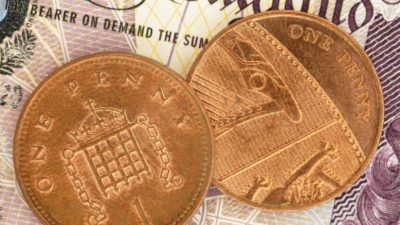National Grid (LSE: NG) shares are down 14% from their 18 September post-rights issue high of £10.61.
The offer involved the right to buy seven shares for every 24 held and ended on 10 June. By that point, the multinational electricity and gas utility giant had secured £7bn in new funding.
As it stands, such a price fall might signal a bargain to be had by me.
Should you invest £1,000 in Boohoo Group right now?
When investing expert Mark Rogers has a stock tip, it can pay to listen. After all, the flagship Motley Fool Share Advisor newsletter he has run for nearly a decade has provided thousands of paying members with top stock recommendations from the UK and US markets. And right now, Mark thinks there are 6 standout stocks that investors should consider buying. Want to see if Boohoo Group made the list?
The valuation
I only buy stocks that look undervalued to me on two broad measures. First, compared to similar stocks on key measures I have used and trusted over 35 years of private investment. Second, compared to where it should be, based on the future cash flow forecasts for the firm.
To begin with the first measures, National Grid trades at a price-to-earnings ratio of 26.6. This is overpriced compared to its competitor group, which averages 12.6.
The same applies to its price-to-sales ratio of 2.4 against a competitor average of 0.9.
However, it is underpriced on the price-to-book ratio – at 1.3 against a 1.7 average for its peers.
To get to the bottom of its valuation, I used the second measure and ran a discounted cash flow analysis. Using other analysts’ numbers and my own, this shows National Grid shares are 26% undervalued at their current £9.16 price.
So, a fair value for them is £12.38, although market unpredictability may push them lower or higher.
Other reward factors
In 2024, National Grid paid a total dividend of 58.52p. This generates a yield of 6.4%, which compares very favourably to the current average FTSE 100 return of 3.6%.
That said, the firm cut the first interim dividend for 2025 by 18%, to 15.84p. If this were applied to 2024’s entire dividend, then 2025 would pay a total of 48p. This would give a yield on the current share price of 5.2%.
Analysts forecast this will fall again in 2026 to 47.4p, before recovering to 48.6p (yielding 5.3%) in 2027.
How does the core business look?
Analysts forecast the firm’s earnings will grow 16.1% a year to the end of 2027. This is a major positive for me, as it is such growth that ultimately drives a stock’s price and dividend higher.
Its 7 November 2024/25 H1 results also looked good, with underlying profit rising 14% year on year to £2.046bn.
This was partly driven by higher revenues in its UK Electricity Transmission business. The other part came from increased rates in its New York and Massachusetts operations, where it has over 20m customers.
Will I buy the stock?
I own other stocks that are much more undervalued than National Grid, in my view, and which pay a higher yield.
Additionally negative for me is the risk attached to National Grid’s huge government-directed infrastructure spending.
It has a debt-to-EBITDA ratio of 5.9, compared to the 3 or less considered healthy. Although it is presently able to cover the interest on this debt by over 3.5 times, it is a sizeable burden for a firm to keep carrying, I think.
Overall, I do not think it is worth my buying National Grid shares right now. However, it is on my watchlist as a possible buy. This depends on it reducing its debt-to-EBITDA ratio to around 3 and on its valuations at that time.








